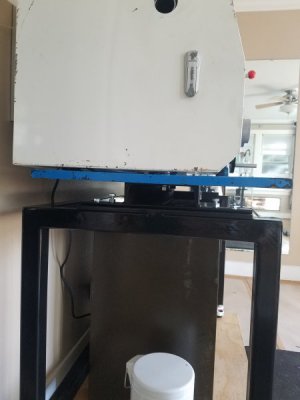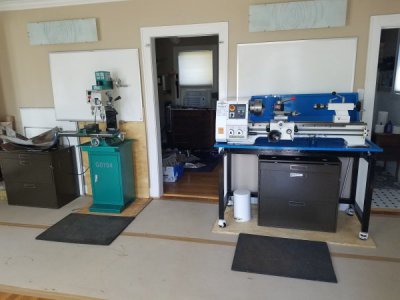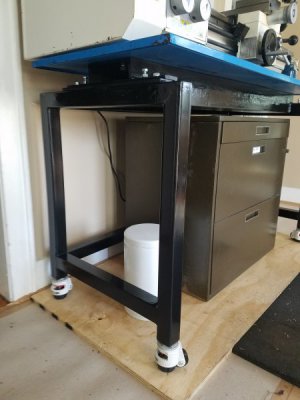-
Welcome back Guest! Did you know you can mentor other members here at H-M? If not, please check out our Relaunch of Hobby Machinist Mentoring Program!
You are using an out of date browser. It may not display this or other websites correctly.
You should upgrade or use an alternative browser.
You should upgrade or use an alternative browser.
How important is levelness of the table for lathes?
- Thread starter Pcmaker
- Start date
- Joined
- May 3, 2017
- Messages
- 1,997
In my opinion, that's a good idea. In my shop, I've made all the tables, workbenches, shelves and rolling stands out of square tubing with tops ranging from 1/8" to 1" thick. No doubt, it's more expensive, but I NEVER worry about sturdiness for anything in the shop. And, it's good practice for project design and welding.Thinking of scrapping everything and just rebuild from the ground up and use 2" square tubing
Regards,
Terry
- Joined
- Nov 9, 2015
- Messages
- 407
Thinking of scrapping everything and just rebuild from the ground up and use 2" square tubing
Pcmaker:
Agree the ideal is a strong, heavy metal bench. But it would be a shame to see your quality work go down the drain. I think you have a stout frame and, being wood, you can easily add more drawers and/or cabinets.
If you choose to stay with your wood frame I see several options to ensure you have a top that is strong, rigid, flat, and stable.
1) Build a metal sub-frame for the top as has been suggested
2) Build a torsion box using 2x4's sandwiched between 2 sheets of plywood
3) Buy a bunch of 2x4's, joint them, cut them to random lengths, laminate them, then plane the whole thing flat, or have a shop do it for you
4) Buy a solid core door, typically made from particleboard, or a well engineered hollow core door
5) Buy a pre-made quality bench top laminated from hardwood
Any of these options will work, but in any case, if you go with a wood top, it should be fitted with 1/4" steel plates for use as mounting plates, and the top should be secured to the frame with mechanical fasteners.
I have a version of #3 for my 10X42 lathe. I have successfully leveled it with a precision level, and it stays level
HTH, Bill
- Joined
- Sep 22, 2018
- Messages
- 23
I recently bought a PM1228 and needed to build a stand. The lathe was going to be set up on the second floor of my garage which made the "foundation" somewhat susceptible to shifts over time and temperature. I looked at @davidpbest torsion beam design and based my design on it. I used two heavy 7"x2" C-channels welded together to form a 7x4 tube. As per david's design, I put an angle on either end of the beam with threaded adjusters on each end of the angles to act as levelers and bolts to lock it in place. I built a simple frame out of 2" square tubing 0.125" wall and put casters with built-in leveling pads so I can move the machine when/if needed but then lock it in place and level the frame. What I found was that after I leveled the frame on the uneven floor there wasn't much need to level the torsion beam. While testing a sample piece in the lathe with a DTI and looking at the twist, I found that the beam was so stiff that the twist adjusters had not effect on the beam itself. I did find that by varying the torque on the 4 mounting bolts the lathe frame would twist which meant that the beam wasn't truly flat. After a bit of shimming and torquing, the machine was solid and no twist and the lathe turned true.
Bottom line is that the torsion beam is so stiff that I doubt the 2" frame is having any effect which means that the shifting of the garage should have no effect either. I'd consider just putting together a metal torsion beam and mount it on your wooden frame.
Pics to follow:


Bottom line is that the torsion beam is so stiff that I doubt the 2" frame is having any effect which means that the shifting of the garage should have no effect either. I'd consider just putting together a metal torsion beam and mount it on your wooden frame.
Pics to follow:




